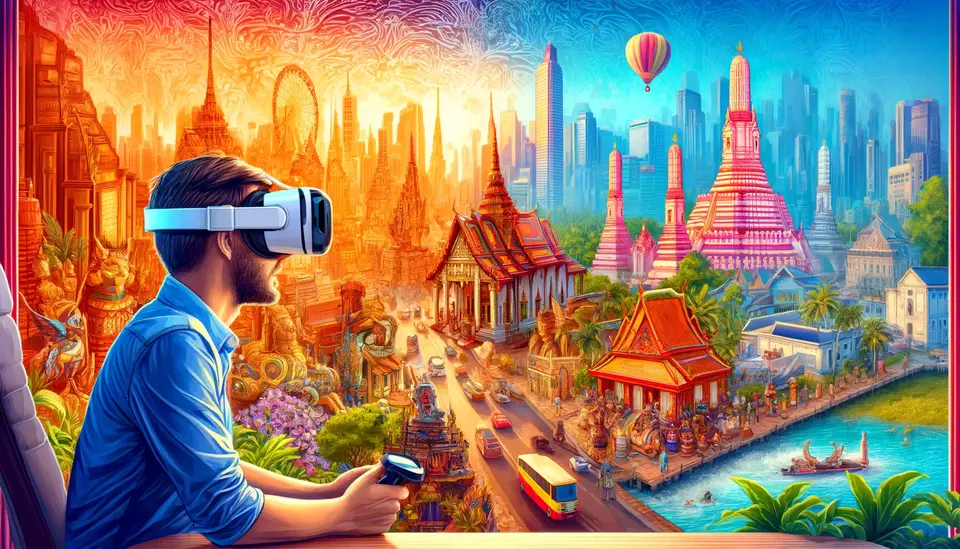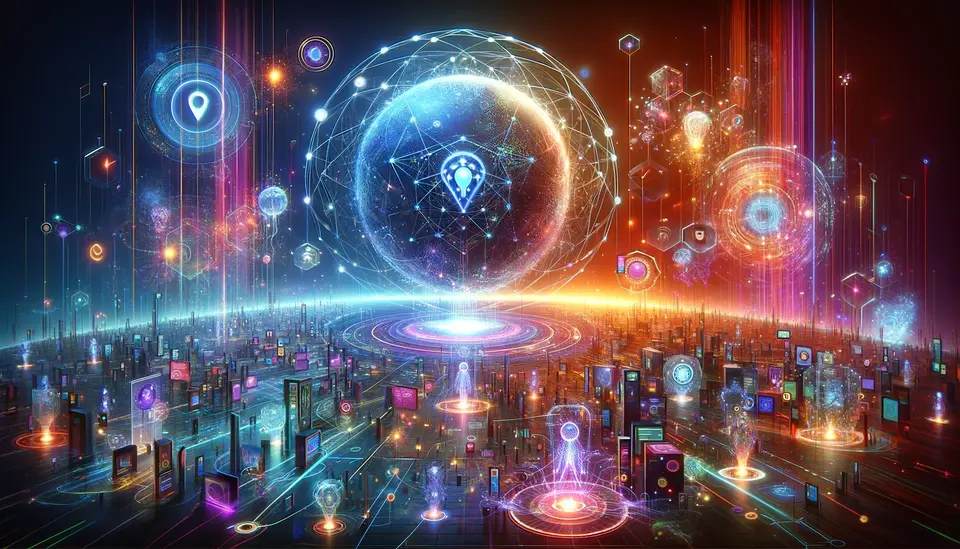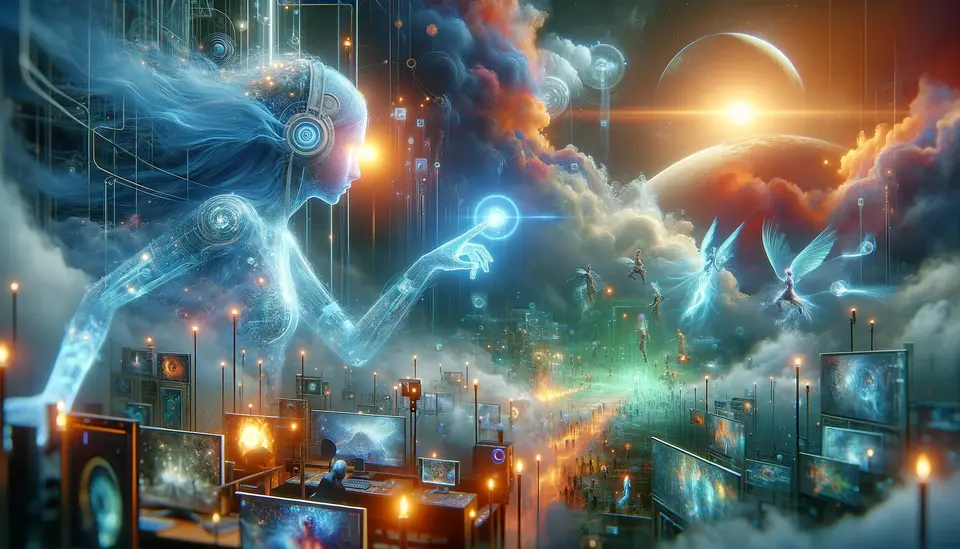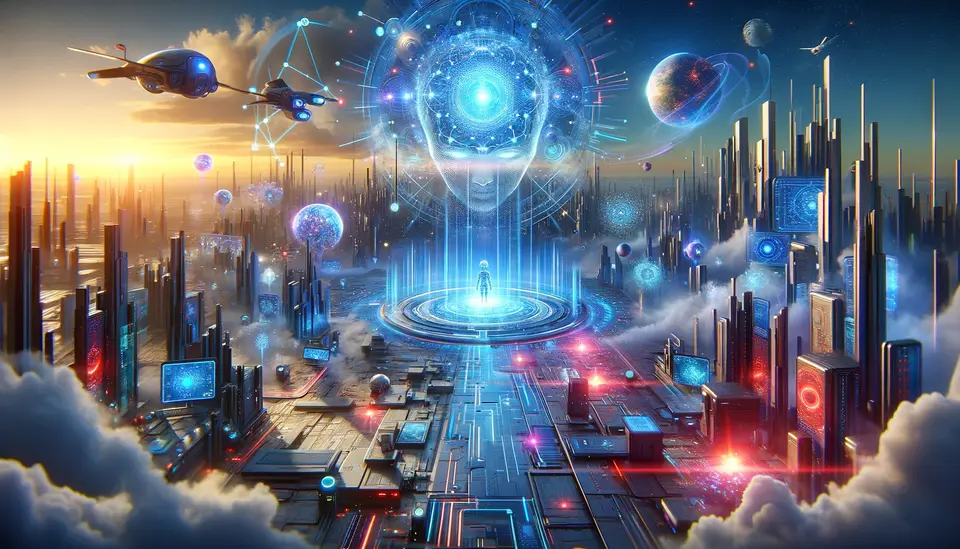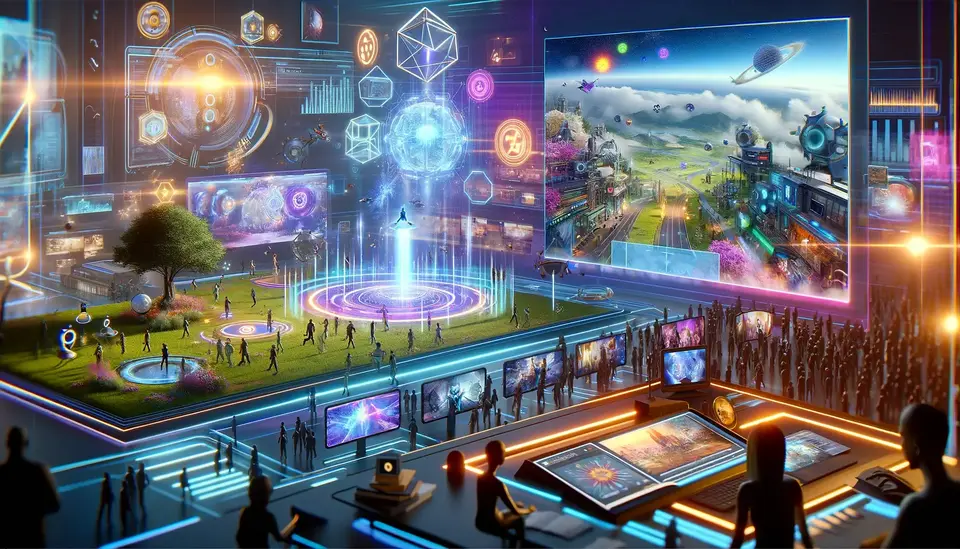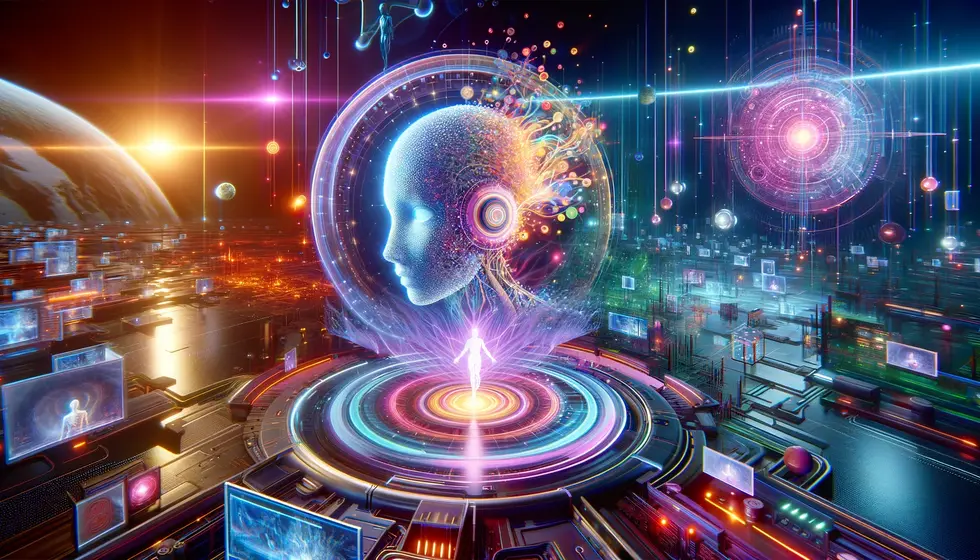Real Examples and Use Cases of Metaverse in Gaming
Posted on May 15, 2023 7 minutes 1328 words
Table of contents
The concept of the Metaverse has been a popular topic of discussion in recent years, particularly within the gaming industry. As a fusion of the virtual and real worlds, the Metaverse offers an expansive, interconnected space where users can engage in immersive and interactive experiences. In this blog post, we will explore various examples of how the Metaverse is being incorporated into gaming, from social interaction and augmented reality to massively multiplayer online games and asset interoperability. We will also discuss the potential for educational applications within the Metaverse.
Social Interaction in the Metaverse
The Metaverse provides an ideal environment for fostering social interactions, as it connects people from all around the world in a shared virtual space. In this section, we will discuss how platforms such as Roblox and VRChat are revolutionizing social interaction within the Metaverse, offering users immersive experiences that transcend the limitations of traditional gaming.
Roblox
Roblox is a popular gaming platform that allows users to create, share, and participate in a wide array of user-generated content. With its unique approach to virtual world building, Roblox embodies many aspects of the Metaverse, enabling players to interact with each other, form communities, and even monetize their creations through in-game transactions. As the platform continues to grow and evolve, it serves as a powerful example of the potential for social interaction within the Metaverse.
VRChat
VRChat is a social virtual reality platform where users can create their own avatars, explore user-created worlds, and engage in a variety of social activities. With its focus on immersive communication and user-generated content, VRChat showcases the possibilities for social interaction within the Metaverse. By fostering a sense of presence and community, VRChat allows users to connect with others from all around the world, transcending physical limitations and creating a truly global virtual space.
Augmented Reality (AR) Gaming
Augmented reality (AR) gaming offers a unique blend of real-world exploration and virtual gameplay, merging the physical and digital realms to create engaging experiences. In this section, we will explore how AR games like Peridot, Pokémon GO and Harry Potter: Wizards Unite have successfully harnessed the power of the Metaverse, enriching players’ experiences by bringing their favorite virtual worlds to life in their everyday surroundings.
Peridot
Peridot is Niantic’s latest AR real-world pet game, inviting players to adopt, nurture, and bond with magical creatures known as Peridots. As a member of the Peridot Keeper Society, players embark on an adventure filled with discovery and limitless possibilities. The game encourages exploration, bonding with Peridots through various activities, and hatching new generations of these unique creatures. By blending the joy of pet ownership with the excitement of AR technology, Peridot offers an enchanting and immersive gaming experience that expands the potential of AR games within the Metaverse.
Harry Potter: Wizards Unite
Harry Potter: Wizards Unite is an AR game set in the Wizarding World, offering players a unique blend of location-based gameplay and immersive storytelling. Developed by the creators of Pokémon GO, Wizards Unite encourages players to explore their surroundings, uncover magical artifacts, and collaborate with others to defeat powerful foes. By combining AR technology with a beloved fictional universe, Wizards Unite showcases the power of the Metaverse in delivering engaging, contextually rich gaming experiences.
Pokémon GO
Pokémon GO is a groundbreaking AR game that blends real-world exploration with virtual creature collecting. By using smartphone cameras and GPS data, Pokémon GO enables players to locate, capture, and battle virtual Pokémon in their physical surroundings. The game’s immense success has demonstrated the potential for AR gaming within the Metaverse, paving the way for other location-based experiences that bridge the gap between the virtual and real worlds.

Massively Multiplayer Online Games (MMOs)
Massively multiplayer online games (MMOs) have long provided players with expansive, interconnected virtual worlds that encourage social interaction, cooperation, and competition. In this section, we will delve into the ways in which games like World of Warcraft and EVE Online have integrated elements of the Metaverse, creating immersive experiences that showcase the potential for complex, shared virtual environments.
EVE Online
EVE Online is a space-themed MMO that features intricate player-driven economies, politics, and warfare. With a vast, shared universe and a deep emphasis on player agency, EVE Online represents a Metaverse-like environment where users can engage in a wide range of activities, from trading and mining to espionage and combat. The game’s complex, emergent gameplay showcases the potential for the Metaverse to support diverse, interconnected experiences that cater to a variety of player interests.
World of Warcraft
As a longstanding MMORPG, World of Warcraft (WoW) has evolved over time to incorporate various elements of the Metaverse into its gameplay and user experience. With its expansive, interconnected world, WoW fosters social interaction, cooperation, and competition among millions of players. Additionally, the game’s economy, politics, and world events serve as examples of how MMOs can provide immersive and complex experiences that resemble the potential of the Metaverse.
Cross-Platform Gaming and Asset Interoperability
As the Metaverse continues to evolve, cross-platform gaming and asset interoperability have become increasingly important. In this section, we will examine how games like Fortnite and Decentraland are pushing the boundaries of the Metaverse, enabling players to interact across different devices, platforms, and even digital economies, paving the way for a more interconnected and dynamic virtual experience.
Fortnite
Fortnite is a popular battle royale game that has embraced Metaverse-like features through its in-game concerts, events, and virtual marketplaces. By incorporating cross-platform play, Fortnite enables players on different devices to compete and collaborate seamlessly, breaking down barriers between gaming platforms. The game’s in-game events, such as virtual concerts featuring famous musicians and collaborations with well-known franchises, highlight the potential for the Metaverse to serve as a hub for entertainment and cultural experiences that transcend traditional gaming boundaries.
Decentraland
Decentraland is a blockchain-based virtual world that emphasizes digital asset ownership, virtual land ownership, and decentralized marketplaces. Users can create, trade, and monetize digital assets, while exploring a vast, user-generated landscape. Decentraland’s focus on asset interoperability and decentralized governance makes it a compelling example of how the Metaverse can support new economic models and empower users to have greater control over their virtual experiences.
Education and Training in the Metaverse
The Metaverse holds great potential not only for gaming but also for educational and training applications. In this section, we will explore how platforms like Minecraft: Education Edition and virtual reality simulations are harnessing the power of the Metaverse to create innovative learning environments that engage students and trainees, offering new possibilities for skill development and knowledge acquisition.
Minecraft: Education Edition
Minecraft: Education Edition is a version of the popular sandbox game specifically designed for educational settings. It provides a virtual environment where students can collaborate, learn, and problem-solve together. With its versatile game mechanics, Minecraft: Education Edition has been used to teach subjects such as history, science, and coding, demonstrating the potential for the Metaverse to serve as an engaging and effective learning platform.
VR Simulations
Virtual reality simulations have the potential to revolutionize job training and skill development across various industries. By providing immersive, realistic environments, VR simulations can help trainees gain practical experience and develop essential skills more efficiently than traditional methods. Industries such as healthcare, aviation, and military have already begun implementing VR simulations for training purposes, showcasing the potential for the Metaverse to transform education and workforce development.
Conclusion
The Metaverse holds great potential for the future of gaming and beyond. Through social interaction, augmented reality, massively multiplayer online games, cross-platform gaming, and educational applications, the Metaverse is already reshaping the way we interact with virtual worlds and each other. As technology continues to evolve and new use cases emerge, the Metaverse promises to unlock a wealth of interactive experiences and opportunities for users around the globe. By staying informed and engaging with these cutting-edge technologies, we can help shape the future of the Metaverse and unlock its full potential.


